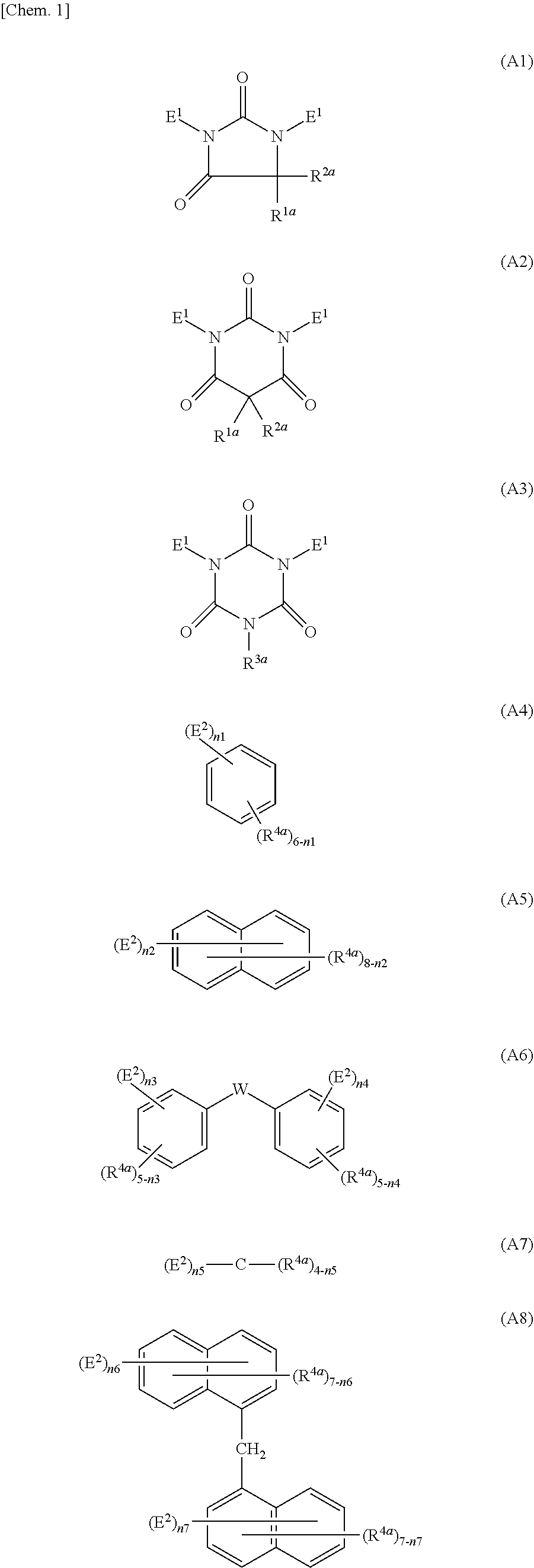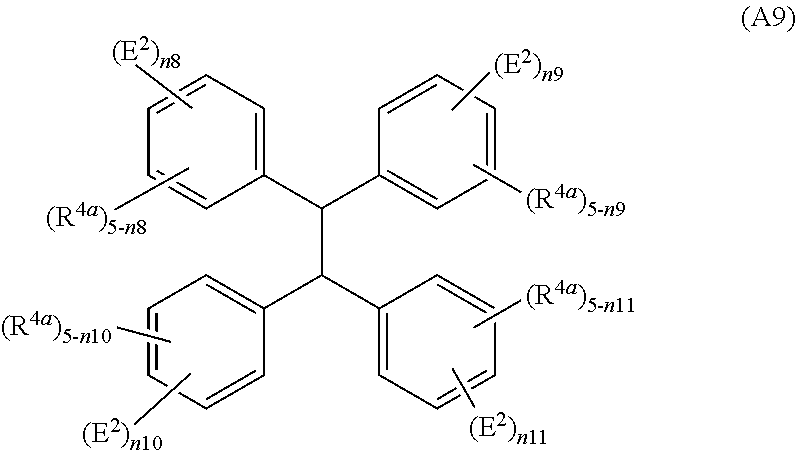Method for producing polymer
a polymer and polymer technology, applied in the field of polymer production methods, can solve the problems of difficult control of the and difficult cooling, etc., to achieve good producibility and easy control of the average molecular weight of the intended polymer. , the effect of good manufacturing
- Summary
- Abstract
- Description
- Claims
- Application Information
AI Technical Summary
Benefits of technology
Problems solved by technology
Method used
Image
Examples
example 21
[0087]A 200 mL reaction flask was charged with 12.6 g of (A) monoallyldiglycidylisocyanuric acid, 6.6 g of (B) adipic acid, 0.84 g of (C) ethyltriphenylphosphonium bromide as a polymerization catalyst, 0.26 g of (D) pyridine as a co-catalyst and 60 g of propylene glycol monomethyl ether to prepare a raw material solution. The molar ratio of the component (C) to the component (D) is 1:1.5, and the equivalent ratio of the component (A) to the component (B) is 1:1.01.
[0088]Subsequently, this solution was heated under reflux at 121° C. and reacted for 1 to 7 hours to synthesize a polymer. GPC analysis of the polymer generated was performed, and the results showed that Mw was 6,500 one hour after reaching of the reflux temperature, Mw was 8,100 two hours after reaching of the reflux temperature, Mw was 8,100 four hours after reaching of the reflux temperature, Mw was 8,000 five hours after reaching of the reflux temperature, Mw was 7,900 six hours after reaching of the reflux temperature...
example 3
[0089]A 200 mL reaction flask was charged with 12.6 g of (A) monoallyldiglycidylisocyanuric acid, 6.6 g of (B) adipic acid, 0.84 g of (C) ethyltriphenylphosphonium bromide as a polymerization catalyst, 0.09 g of (D) pyridine as a co-catalyst and 60 g of propylene glycol monomethyl ether to prepare a raw material solution. The molar ratio of the component (C) to the component (D) is 1:0.5, and the equivalent ratio of the component (A) to the component (B) is 1:1.01.
[0090]Subsequently, this solution was heated under reflux at 121° C. and reacted for 1 to 7 hours to synthesize a polymer. GPC analysis of the polymer generated was performed, and the results showed that Mw was 8,500 one hour after reaching of the reflux temperature, Mw was 13,200 two hours after reaching of the reflux temperature, Mw was 15,000 four hours after reaching of the reflux temperature, Mw was 14,900 five hours after reaching of the reflux temperature, Mw was 14,800 six hours after reaching of the reflux tempera...
example 4
[0091]A 200 mL reaction flask was charged with 12.6 g of (A) monoallyldiglycidylisocyanuric acid, 6.6 g of (B) adipic acid, 0.42 g of (C) ethyltriphenylphosphonium bromide as a polymerization catalyst, 0.09 g of (D) pyridine as a co-catalyst and 60 g of propylene glycol monomethyl ether to prepare a raw material solution. The molar ratio of the component (C) to the component (D) is 1.0:1.0, and the equivalent ratio of the component (A) to the component (B) is 1:1.01.
[0092]Subsequently, this solution was heated under reflux at 121° C. and reacted for 1 to 8 hours to synthesize a polymer. GPC analysis of the polymer generated was performed, and the results showed that Mw was 3.800 one hour after reaching of the reflux temperature. Mw was 9,900 two hours after reaching of the reflux temperature, Mw was 13,900 four hours after reaching of the reflux temperature, Mw was 14,000 five hours after reaching of the reflux temperature, Mw was 14,000 six hours after reaching of the reflux temper...
PUM
| Property | Measurement | Unit |
|---|---|---|
| temperature | aaaaa | aaaaa |
| molar ratio | aaaaa | aaaaa |
| reaction temperature | aaaaa | aaaaa |
Abstract
Description
Claims
Application Information
 Login to View More
Login to View More - R&D
- Intellectual Property
- Life Sciences
- Materials
- Tech Scout
- Unparalleled Data Quality
- Higher Quality Content
- 60% Fewer Hallucinations
Browse by: Latest US Patents, China's latest patents, Technical Efficacy Thesaurus, Application Domain, Technology Topic, Popular Technical Reports.
© 2025 PatSnap. All rights reserved.Legal|Privacy policy|Modern Slavery Act Transparency Statement|Sitemap|About US| Contact US: help@patsnap.com



